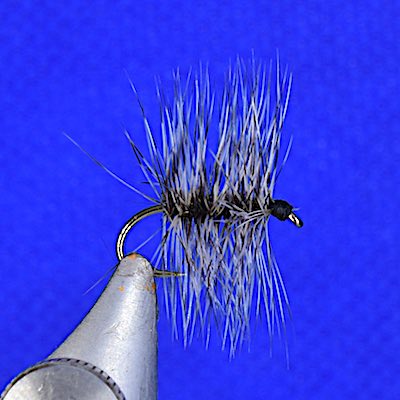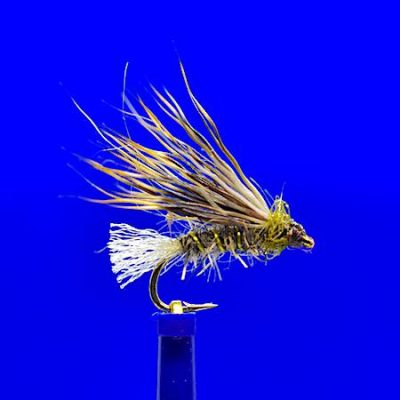How to fish the Fridge Pool on the Welsh Dee at Llangollen
Table of Contents
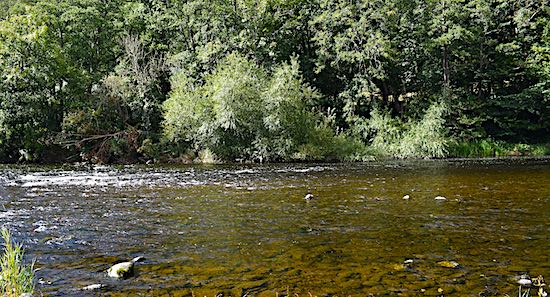
Welcome to this fly fishing guide for the Fridge Pool that is based on my 30+ years knowledge and experience of fishing the Welsh Dee at Llangollen.
At first sight, the Fridge Pool it doesn’t look like it holds many fish. However, don’t let that fool you because I’ve caught plenty of trout and grayling while fishing this Pool.
For salmon and sea trout, I would classify it as a minor pool, where you’ll find the odd fish resting before it attempts the tortuous run upriver to the Top Pool.
Fly fishing for trout and grayling:
The Fridge Pool is a beautiful stretch of trout and grayling fly fishing water, which will produce fish over its entire length.
I usually fish the pool at river levels up to 0.7 m (Corwen gauge), having the most success when the river is close to its summer level (0.5 m @ Manley Hall). Fishing in this pool can be variable, but it’s feasible to catch 10+ fish there when conditions are good.
Below is a sketch of the topography of the Fridge pool, which I have split into three sections. Showing its key features and where I fish typically catch fish at a river level of 0.5m (Corwen gauge).
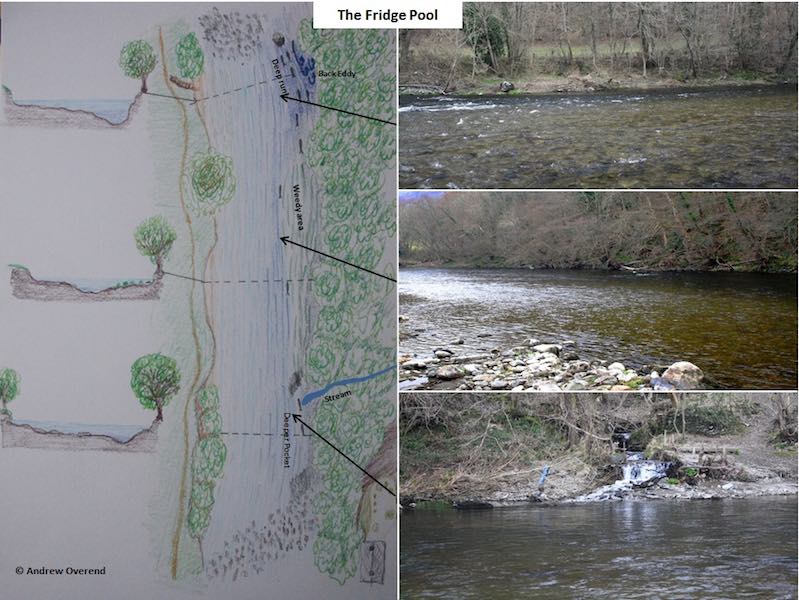
When the river is close to its summer level, fishing the head of the pool usually produces the most trout and grayling.
During the day, the fishing hot spot area is from behind the large rock down through the deep back eddy, shaded by the overhanging trees on the far bank.
How to fish the head of the Fridge pool
In the absence of rising fish, I find the best approach is to start fishing a team of Czech nymphs through the head of the pool.
Start just above the weed beds and fish the main channel upriver to the large, submerged rock at the top of the pool. Ensure you cover the foam line between the main channel and the back Eddie.
“If you’re nymphs are not clipping the bottom then you are only going to get the odd fish at best.”
I use a heavy point fly (size 12 to 10, with a 3+mm tungsten bead) to drag the other flies quickly to the riverbed.
For the middle & top droppers, I use small nymphs (size 16 to 18) of different colours (i.e. brown, black or grey). Then depending on what is catching fish, I will change the middle or top dropper to the same fly – this increases the catch rate.
If I think fish will start taking flies close to the surface, I use a spider pattern on the top dropper. Then, when the spider begins catching more fish, I switch to fishing wet flies and spiders on a floating line.
For beginners, the following combination of nymphs will get you started on the Fridge Pool:
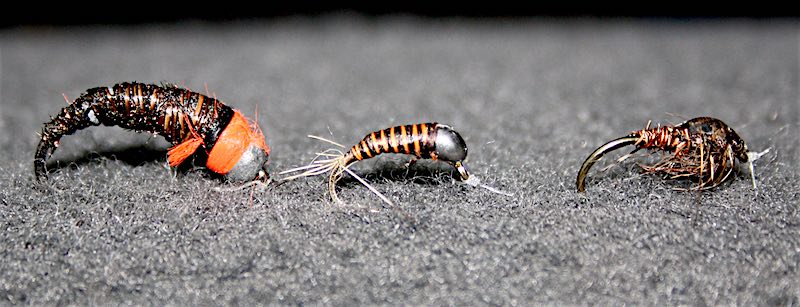
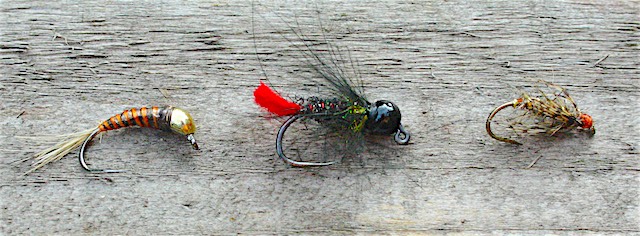
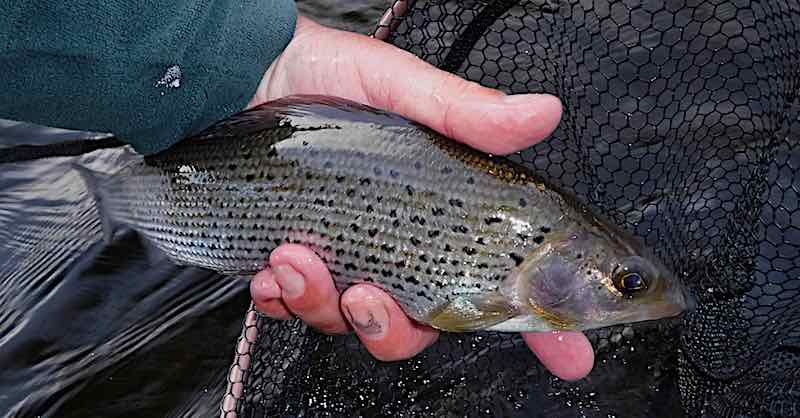
To help explain how to fish the Fridge Pool with nymphs, I’ve produced the following video. The river was close to its summer level, 0.47m Manley Hall gauge.
If Euro nymphing doesn’t work, try fishing with wet or dry flies.
How to fish the middle & tail of the Fridge pool
Dry fly fishing is my preferred method for fishing the middle and tail sections of the Fridge Pool, especially when fish are feeding on flies at the surface.
For fly selection, I try to match the colour and size of the hatch. If that is not possible, I’ve found fishing the following double dry set-up usually works (a size 10-12 sight fly and a small (size 16 to 20) trailing fly.
If no fish are rising, then wet fly fishing is worth trying. I either fish a team of spiders or wet flies across and downriver. Focus on the area where the stream flows on the far bank.
On bright sunny days, fish are hard to catch in the tail of the pool, especially when the river is low. Under these conditions, it’s best to fish there either early in the morning or late evening, which can produce some big grayling and trout.
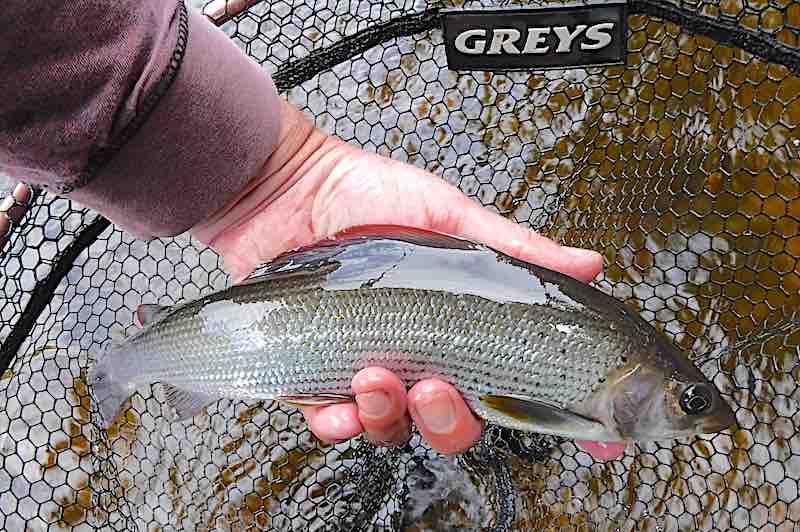
When the river is clear, it’s best to fish wet flies no bigger than a size 14. My only exception would be early in the season when I use a size 12 fly on the point to fish the flies a little deeper.
For beginners following combination of wet flies will get you started:
Early season wet fly team (Left to Right: – size 12 pheasant tail nymph; size 14, black hopper; size 14, March Brown spider):
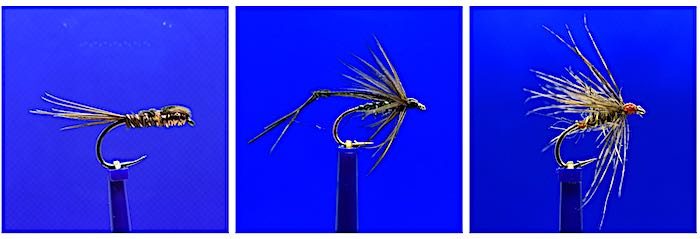
Mid season wet fly team: Left to Right: (#14 black hopper; 14, March Brown spider; #14 Iron Blue wet fly):
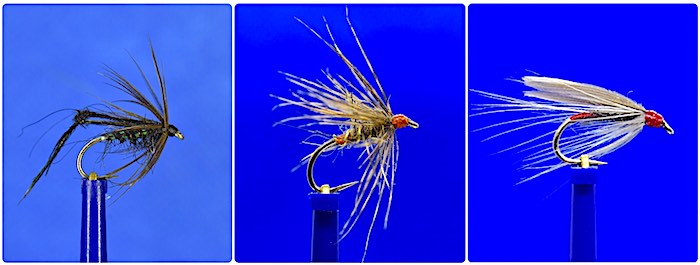
Summary - trout and grayling fly fishing the Fridge Pool
October to April
Largely my approach depends on water/air temperature.
On cold days Czech nymphs work well, particularly when there is little or no fly activity on the surface.
When flies are observed coming off the water dry fishing can yield good results.
However, I find wet flies, spiders and nymphs fished close to the usually out fish dries.
May to Sept
My approach is governed by the time of day and cloud cover.
Early morning wet flies, spiders & nymphing techniques work well followed by dry flies.
On bright sunny days, by mid-day onwards focus on searching the bottom of well oxygenated, shady runs with Czech nymphs.
In the evening dry flies and wet flies fished close to the surface usually pay dividends.
- 10 grayling flies for January
- Best grayling flies for February
- 10 Trout flies for March
- 6 April flies for catching more trout
- 11 top trout fly patterns for May
- 8 Great flies for June on the Welsh Dee
- 8 flies for July on the Welsh Dee
- Best trout flies for August
- 12 great flies for September
- 10 grayling flies for October
- Best grayling flies for November
- 13 grayling flies for December
Fly fishing the Fridge Pool for Sea Trout
Usually, the main run of Welsh Dee sea trout (1 to 3lb mark) arrives at Llangollen in July with the run peaking in August. In the Fridge Pool sea trout can be found in the deep back-eddy at the head of the pool and in the tail below the stream on the far bank.
During the peak of the season, when the river is at its summer level (<0.55 m @ Corwen), I find the best approach is to start fishing in the riffle as it gets dark.
I usually start with a team of small wet flies (size 14 to 12) on a 3 lb tapered copolymer leader, e.g. Butcher, Black Hopper, March Brown Spider, Teal Blue & Silver, Black Pennell, Mallard & Claret etc.
Cast the flies squarely across the river, trying to get close to the bushes on the far bank. Allow them to drift around in the current. If the current slows, add motion to the flies by side flicks of the rod-tip; often takes come immediately afterwards.
Once dark, I increase the breaking strain of the tapered leader (8 – 10lbs) and move to larger flies (size 10 to 8 singles). Then I move down to fish through the rest of the pool to the tail.
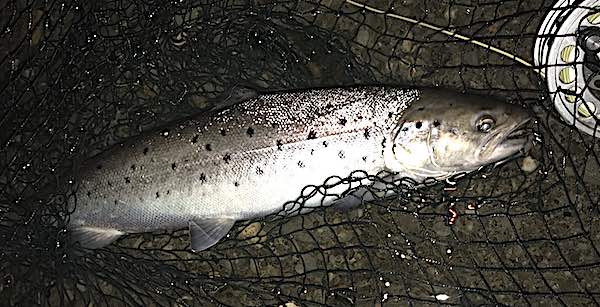
If you are interested in learning more about sea trout fishing on the Welsh Dee, it’s worth reading the following post:
Fly fishing the Fridge Pool for Salmon:
I would classify the Fridge Pool as a minor salmon pool – one where it is possible to catch a resting salmon before it tackles the long, fast section to the Top Pool. It is always worth a quick try, but I’m still trying to catch a salmon there.
The only salmon I’ve seen caught in the Fridge Pool was by my friend Gareth. He caught it behind the large rock at the head of the pool, while fishing for grayling using a Caddis gold head.
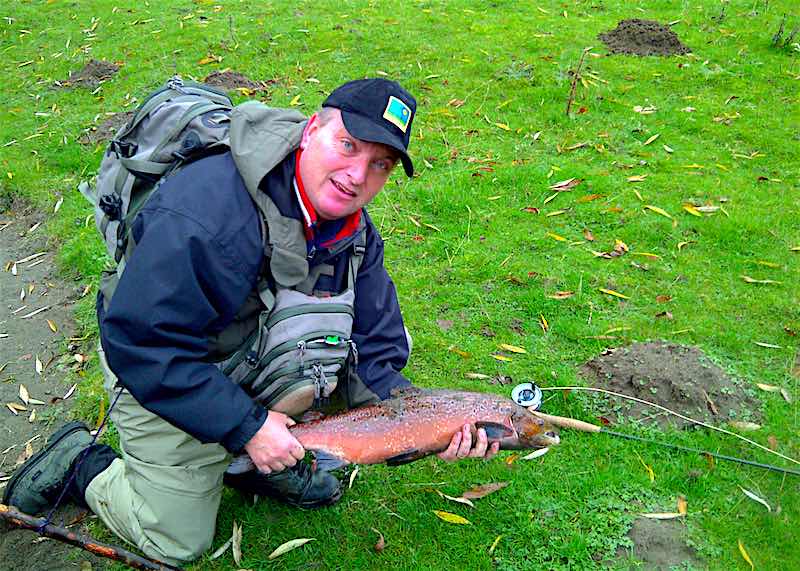
How to find the Fridge Pool
Take the A5 from Llangollen to Crown. Then, after the junction with the B5103 by Berwyn Station, take the next right and follow the lane for about 1 mile. Where you will see the top car park on your left.
From the car park, walk up the lane and over the style into the field on your right. Follow the fence down the hill to the river and walk upriver until you reach the gate to the wood. Just before the gate, the dry stone wall that leads to the river; and marks the head of the Fridge Pool.
[Disclaimer – like most outdoor sports, fishing is not without its hazards. Therefore, you MUST do your own RISK ASSESSMENT before starting to fish, especially if you decide to wade or fish at night. In addition, you must follow the club rules for this beat.]
